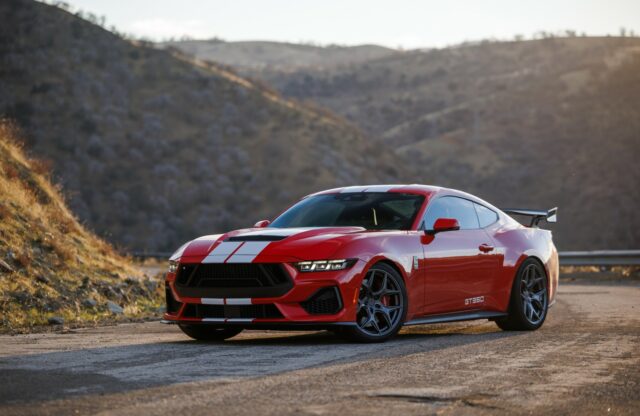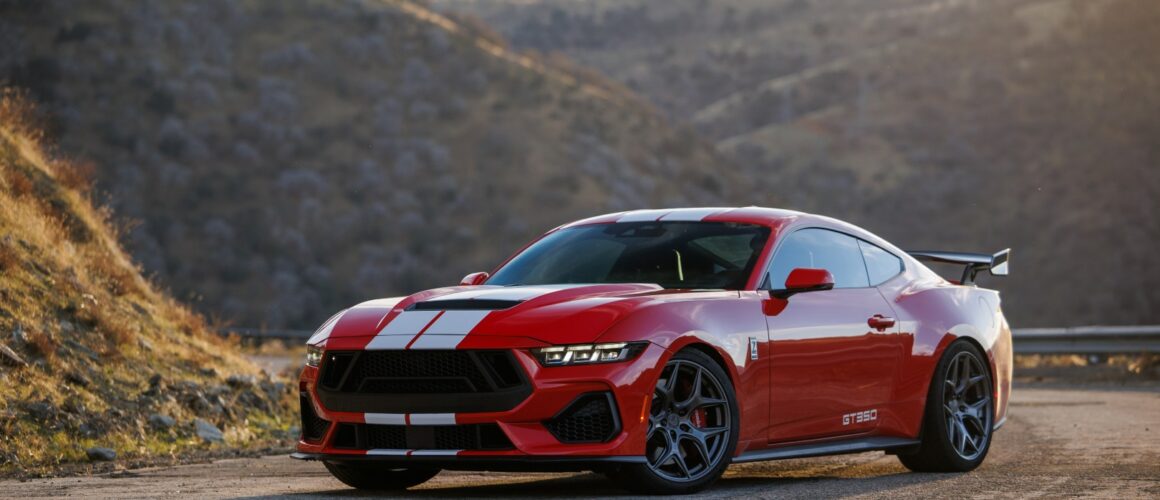Earlier this year, Shelby American stole the spotlight at Barrett-Jackson’s annual Scottsdale auction in Arizona, unveiling all-new versions of its GT350 and GT350 R Mustangs. The reveal coincided with the 60th anniversary of the original Mustang GT350 R programme that was overseen by the great Carroll Shelby.
Built on the foundations of the latest seventh-generation Mustang, the GT350 and the track-focused yet road-legal GT350 R are hailed as the most circuit-ready production Mustangs to date. From the imagery alone, it’s not difficult to see why. The bodywork of both models is incredibly aggressive, replete with vents and aerodynamic enhancements, while a huge 3.0-litre Whipple supercharger squeezes 830bhp from the supercharged 5.0-litre V8 in its most potent GT350 R configuration.
The ‘standard’ GT350, meanwhile, is available with either a naturally aspirated version of the Coyote V8, producing a still-impressive 480bhp, or the supercharged 830bhp variant. Crucially, both models come with a manual transmission as standard – a rarity in an era of engine downsizing and electrification – although an automatic is available as an option.
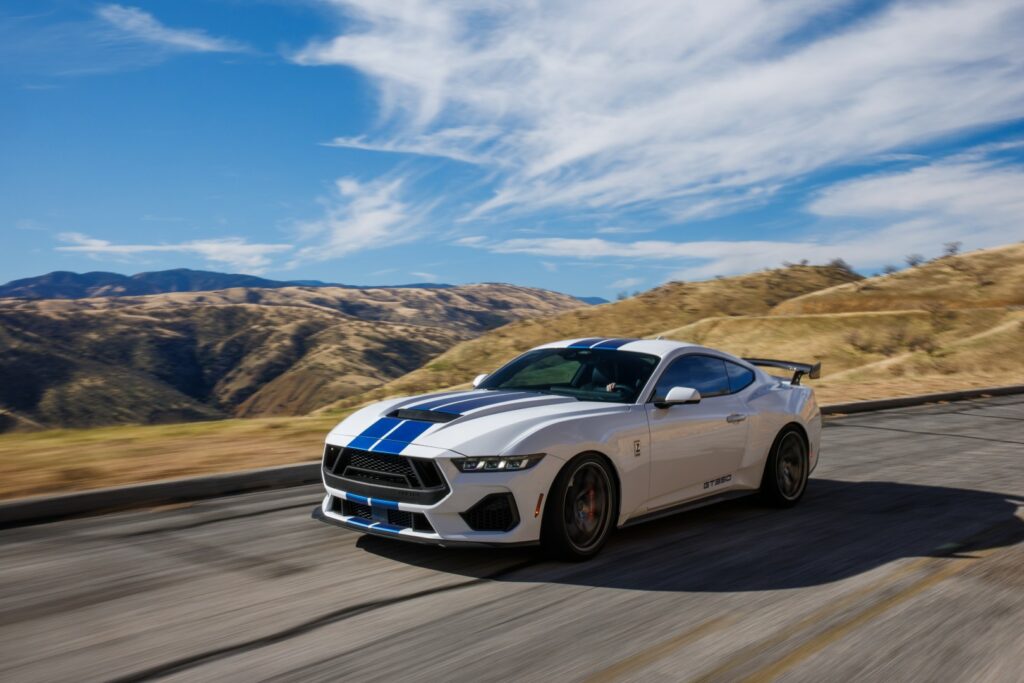
“It was important for us to celebrate the 60th anniversary of the GT350, so we thought coming out with a new limited-production version was a great way to mark the occasion,” explains Aaron Shelby in a video call. The grandson of Carroll Shelby, and a Shelby American board member, Aaron was joined on the call by Shelby American president Gary Patterson and vice-president of operations and senior designer, Vince LaViolette.
“The kicker is obviously the GT350 R model, and that’s something Gary has been heavily involved in creating,” Aaron continues, hinting at the deeper engineering story behind the car. But we’ll get down to the nuts and bolts of what makes Shelby’s latest creations so special later on. First, it’s important to explain how these cars bridge the brand’s motor sport heritage with today’s high-performance engineering.
Shelby American was founded by the legendary Carroll in 1962. A highly skilled racing driver, he established the company after being forced to retire from competition in 1960 due to health issues – just a year after clinching victory at the Le Mans 24 Hours in an Aston Martin DBR1.
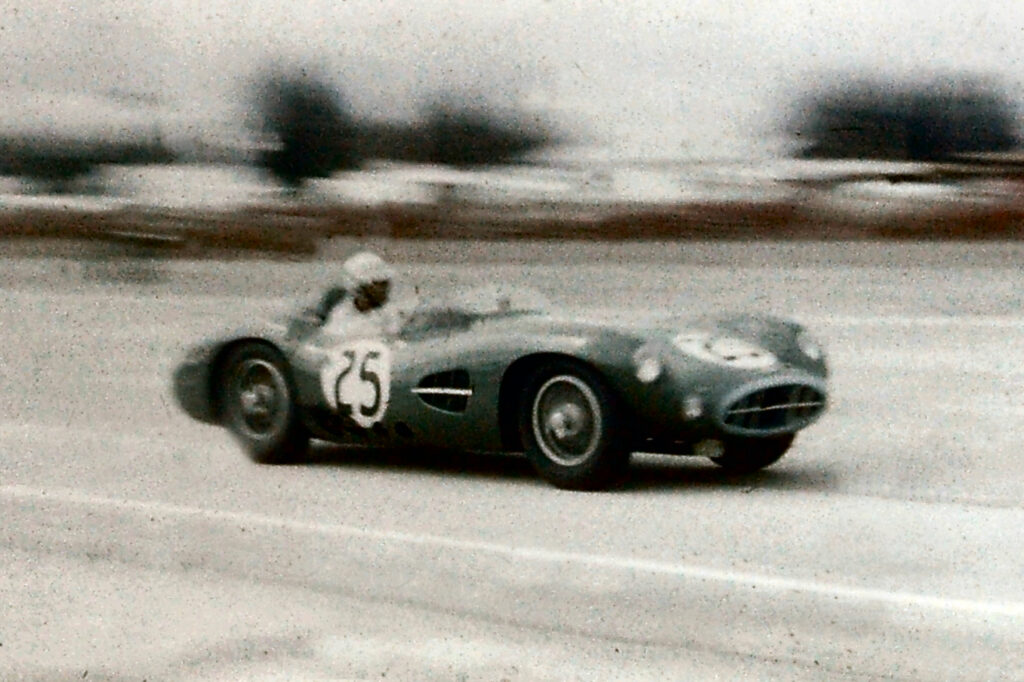
Shelby’s racing cars made an immediate impact – particularly the Cobra – which led Ford to approach him in 1964, asking him to enhance the performance of its popular Mustang. The first collaboration between the two companies resulted in the original Shelby GT350, which became the first truly high-performance version of the Mustang.
Powered by a 4.7-litre V8 fed by a large four-barrel Holley 715 CFM carburettor, the 1965 GT350 developed 306bhp – an impressive figure for the era. The upgraded powertrain was complemented by lowered front suspension arms, larger front sway bars, adjustable Koni shock absorbers and beefier brakes. These modifications quickly established the motor sport-spec GT350 R as a dominant machine, winning the Sports Car Club of America (SCCA) B-Production class title in 1965, 1966 and 1967.
After this success, an even more potent GT500 was introduced in 1967, but Shelby American and Ford parted ways in 1970, leading to the temporary retirement of the Shelby Mustang. The Shelby GT was then launched as a special-edition model in 2007, and was followed by a revived GT350 model in 2010, followed by further evolutions built by Ford under license in 2015 and 2020. The latest, 2025 version continues Carroll Shelby’s legacy well into the 21st century.

As with the original, the new GT350 R was developed with Trans-Am racing in mind. It was developed by Shelby in collaboration with Michigan-based engineering firm and motor sport preparer Turn Key Automotive. “Our collaboration with Turn Key Automotive has been great,” Gary asserts. “What we aimed to do was set a new bar for the company, and create a big difference between the GT350 and the GT350 R. There was a fair amount of difference between the two models in 1965, although both cars were track-orientated.”
The specifications of the thunderous Coyote V8 represents another nod to the past. Interestingly, Ford has reverted to a more traditional crossplane crankshaft for its latest Mustang V8, in contrast to the more highly strung flatplane crank that appeared in the now-discontinued 5.2-litre Voodoo V8 of the 2020 GT350.
“We really love the flatplane, but it just didn’t make sense for this application,” Gary expands. “Especially when we looked at Trans-Am and what the series would allow, the 5.0-litre crossplane is the spec engine.”
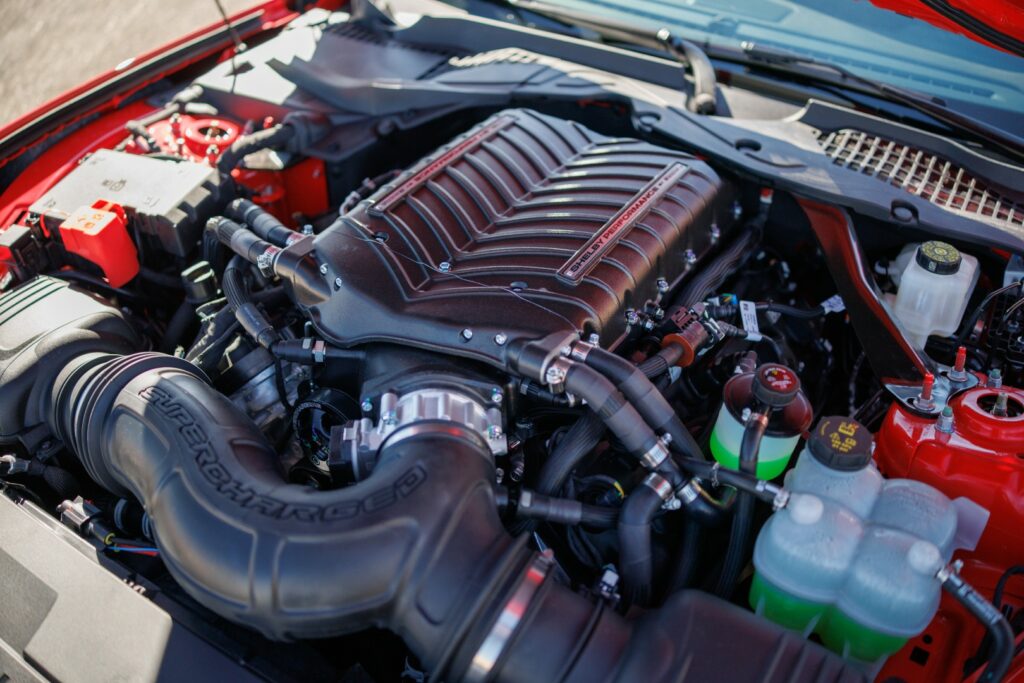
“Another problem with the earlier 5.2-litre engine was that we couldn’t add any power to it because the crank wouldn’t be able to handle it,” Vince interjects. “So, that’s the reason why we never gave the last GT350 R any extra power. The 5.0-litre allows us to give the customers what they want.”
Further parallels with the original GT350 and GT350 R can be seen in the raft of modifications Shelby has made to the chassis, bodywork, suspension and brakes – particularly the R model. The GT350 R boasts an extensive list of enhancements, including a non-structural carbonfibre interior tub, optional carbonfibre seats with racing harnesses, integrated roll cage, adjustable suspension, larger brakes and a more aggressive aerodynamic package. Notably, many of these upgrades will carry over to the Trans-Am race car set to compete in the 2026 season.
“We’re a small company with a big name, which means that we can push ahead and get things done,” Aaron says. “We always pick the best solutions, try them out – and if they work, we continue with them. A lot of testing goes into what we do, and we never throw parts on the car just because they look cool.”
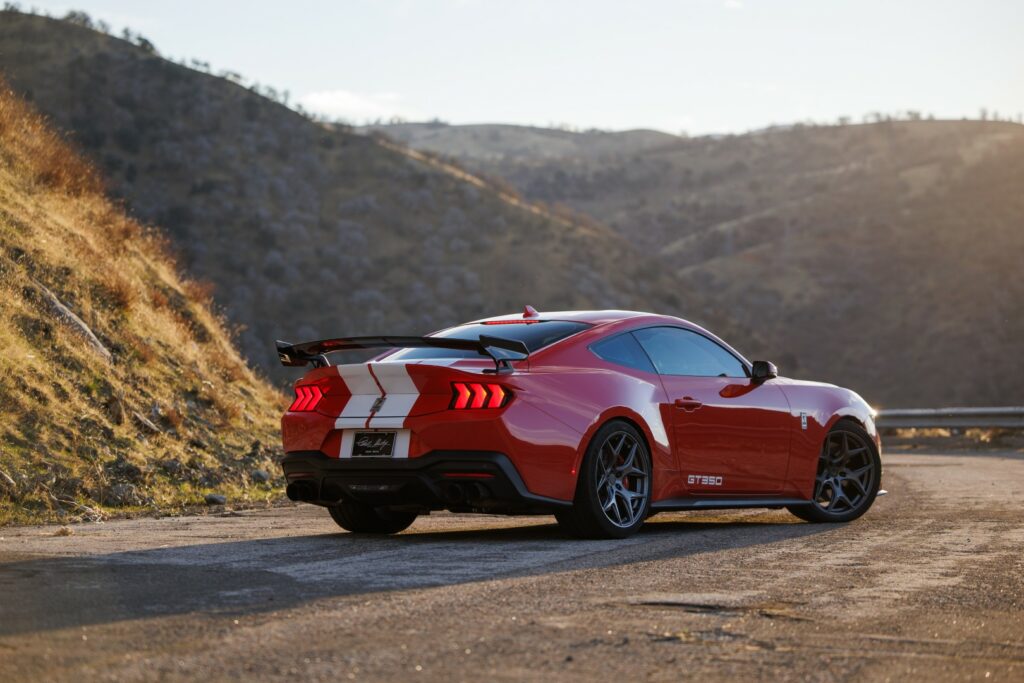
“Both Vince and I did a lot of the development driving for Carroll Shelby when he was still around,” Gary adds. “We still do it to this day, so we certainly have car people running a car company. It’s just like Carroll used to say: ‘Shelby is a band of hot rodders, and we can take on the world.’ And we did.”
“I’ve been in racing and car design for my entire life, so I know what works,” Vince interjects sagely. “One of the most exciting things we discovered during testing was when we fitted the supercharger to a car with a stock front end and we found that our underhood temperatures were right around 190-200ºF (87-90ºC). With the new front end, fenders and hood, the underhood temperatures were only eight degrees above ambient temperature at 130mph.”
Shelby took the same approach with the car’s suspension, as Aaron explains: “Not only have we tuned the engine, but we have also tuned the suspension. We’ve upgraded the suspension ECUs and changed the algorithms for the suspension. Track Mode, for example, is far different from the original settings Ford used, which means that the car works completely differently from a factory Mustang on a circuit.”
“So there are a lot of different things we’ve done – or Easter eggs, as we call them – that we’ve hidden within the car,” Vince continues.
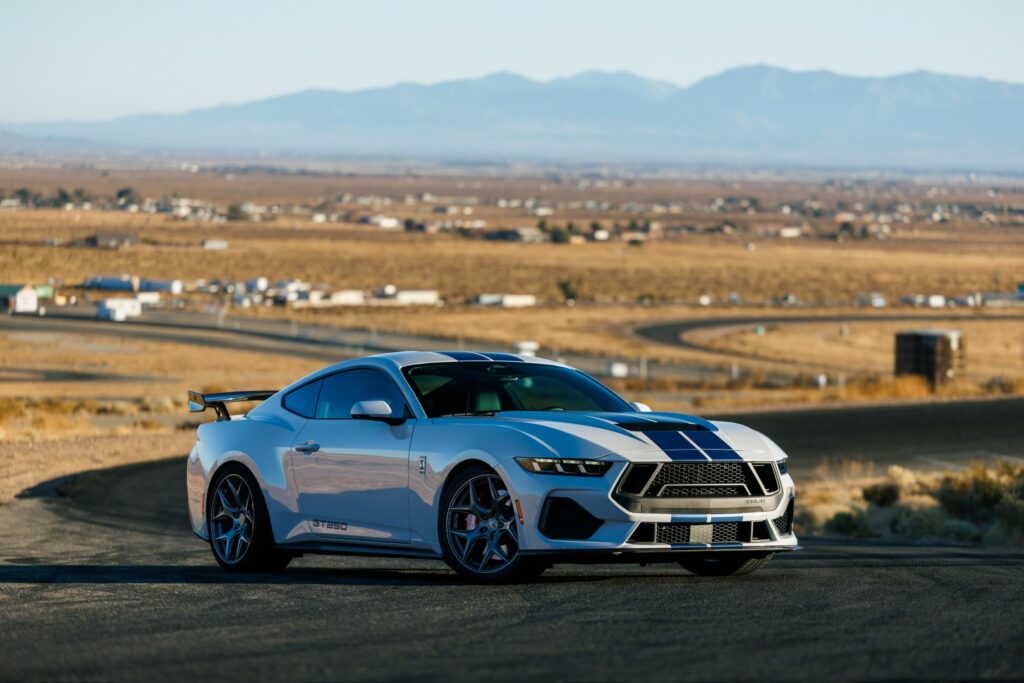
Magneto readers will also be heartened to discover that the modern car is imbued with far more than merely mechanical echoes of Carroll’s philosophy. The relationships between the very people that developed the car jive with the 1960s, too.
“The Turn Key Automotive connection was such an important part of the car’s development,” Gary says. “The company is owned by Richard Rinke – and his son, Jack, is an engineer and a test driver. If you’ve seen the movie Ford v Ferrari, then you’ll definitely notice the correlation with the relationship between Carroll Shelby and Ken Miles. All the guys involved are car enthusiasts and racers, and we prefer a suit with a zip at the front over one with a tie.”
Shelby American’s deep respect for its heritage is evident in its production plans. The company will build 562 GT350s for 2025 – including the 36 R models, just as in 1965. Production is slated to begin imminently, and cars will be available in select Ford dealerships around the globe. Prices for the GT350 start at $109,999, while the GT350 R’s list price remains undisclosed.
For more information, click here.
